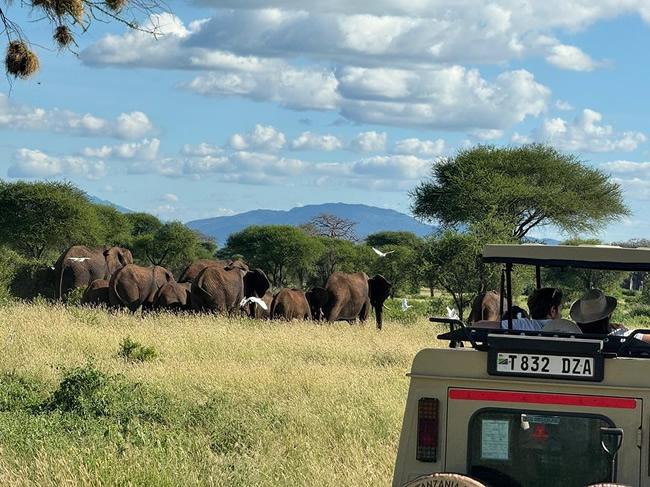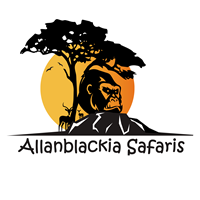A guide through the 6th Largest and one of the oldest National park in the republic of Tanzania in the east of the continent of Africa, surrounded by among others; the democratic republic of Congo, Rwanda, Burundi, Uganda, and the republic of Kenya. Tarangire National park Measures approximately 2,850 sqkm and features a river valley, acacia woodland, granite ridges, swamps and combretum woodland. The name is derived from river Tarangire, initially conserved to protect the wildlife and cause an end to hunting. The British colonial government conserved the area in 1900, and later transformed it into a game reserve in 1951 but part of Masai Steppe Game reserve. Forward to 1970, the game reserve was established as a national park In the Manyara region. Today, the park is home to over 80 large mammal species, such as the large herds of elephants, lions, leopards, buffaloes and more, over 550 bird species, different greenery and more.
Tarangire National park is situated in northern Tanzania, south of Maasai steppe and other game reserves. You can get to it by either air or road. By air, fly into Kilimanjaro international airport to Arusha. Tarangire national park has two gates; opening at 6am and closing at 6pm. Sangaiwe gate is located in the north of sangaiwe hills roughly 40 minute drive from Babati-Makuyuni route. Boundary hill gate is the other gate, located in the north east border. All park entrance payments and for activities are done here. Plan for your unwinding experience with a family, school, and friends or as a solo. One can also combine Tarangire with other destinations in the circuit such as Arusha, Kilimanjaro national park-with the tallest stand-alone mountain, Serengeti national park, Lake Manyara and Ngorongoro crater.
Activities at Tarangire National park
Game drive
Spend a half, full or night hours of the day traversing the open savannah grass land identifying the different treasures and mammals in the park. No assurance of what you will see though the ranger guide will assist. Lookout for among others; the zebras, giraffes, lions, kudu, gazelles, dik-dik, olive baboons caracals, herds of elephants, Cape Buffalos, and much more. Such as Lemiyon triangle, Tarangire River, the poachers hide, the swamps, matete woodlands, and kitibong hill.

Bird watching
With over 550 bird species here, it is a wise decision to take note of at least 100 birdsepecies. Birds are very unique and special, with each carrying a signifance either in a certain culture in the globe or to individuals. The birder guide will take you to the drier and designated birding trails to chance a sight of among others; the Kori bustard, hornbill, ostriches, yellow necked spur fowls, barbets, plovers, hamerkoop, startling, lilac breasted rollers, falcons, crested francolins and more.
Nature Walk
Draw closer to Mother Nature with your guide while identifying the greenery, the geographical features, and the breathtaking scenery. The walk is safe, and on a lucky day, you get to see more than only plants. You may see the grazers in a distance such as the zebra, wildebeests, waterbucks, impalas, elephants and more. Get to do physical exercise and admire the open grass land
Cultural tours
While at Tarangire national park, you don’t get bored as there are people to meet and talk to. Get to know other peoples cultures and the rural life. What they eat, worship, dress on, and where they sleep. Visit the Maasai people who are renowned cattle keepers. The interaction include a community walk, cultural dances, ancient stories, and purchase of the local souvenirs. Pack from the Masai people unique jewelry such as the necklaces, earrings, and the ankles made of several colors. Community appreciation and participation is highly recommended as everyone must be involved in the activities.
Hot air balloon safari
Have your wildlife safari in style by taking the experience to the space by exploring the wilderness on a hot air balloon. You have an aerial view of the wilderness and its habitats, and climax the one hour tour with a toast of Champaign and bush breakfast in the wild.

Best Time to visit Tarangire National Park and where to stay
Tarangire is open to visitors all year round with the best months being the dry month of June to September and December to March. The wet months of the year come with discounts in accommodation and other services. Accommodation present at the Park Range from budget to luxury lodges. To get the best accommodation, you need to reserve at least three months in advance. Notable accommodations include: Nimali Tarangire which is a permanent tented camp, Swala Safari Camp, Tarangire safari lodge, Tarangire Sopa lodge, Maramboi Tented camp, Sangaiwe Tented lodge, and Tarangire Treetop among others.
In conclusion, Tarangire national park is open for tourists all year round. It is one of those destinations where you can witness a large concentration of wildlife with ease. Most especially during the dry season when most mammals and bird visit for water and the greenery.
